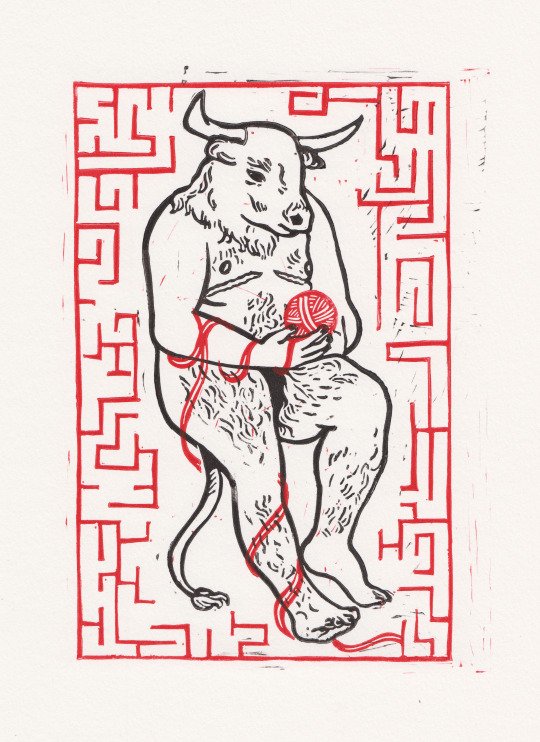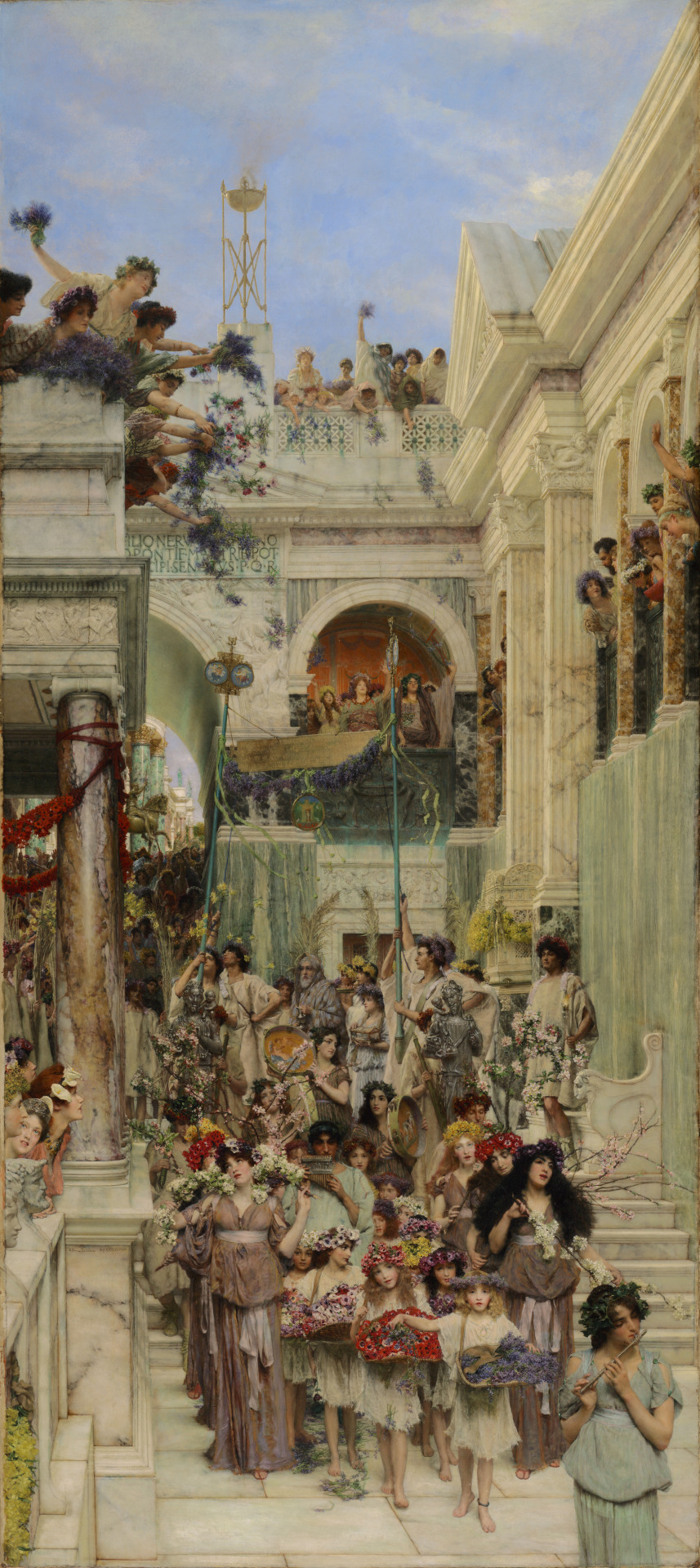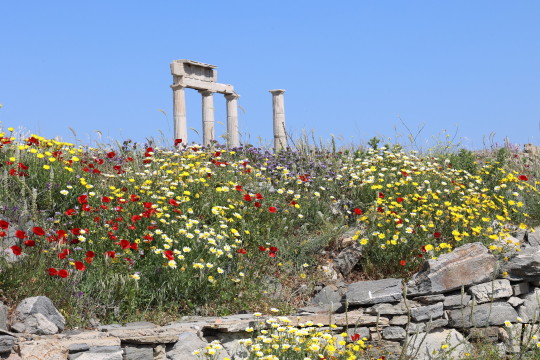Text
Ancient Greece's biggest festival "The Anthesteria"









The Anthesteria was a great ancient Greek annual festival in honor of the God Dionysus, which was celebrated in Attica and in many Ionian cities. The Apothecaries are also referred to under the more general name "Dionysia".
Their celebration in Ancient Athens was held on the 11th to the 13th of the month Anthestirionos (end of February - beginning of March).
The first day of the Anthesterias was called pithoiyya. It was named so from the fact that on this day the pithos were opened and tasted for the first time with the wine of the year.
The second day was called hoes (χόες), from the wine-pot of the same name, and the third day of the Anthesterias was called chytroi, because vases of flowers, cooked vegetables, and panspermia of grain were offered on the day.After the ceremony, the procession headed to the "Voukoleio", building of the Agora of Athens, seat of the King. There, the hierogamy took place, the ritual union of Basilinna (that is, the King's wife) with the god Dionysus, who, as we mentioned, was represented by the King himself. Some say this ritual was ment to represent the wedding of Dionysus with his wife Ariadne.
On the third and last day, the Hydrophoria were celebrated in honor of those who perished in the Deluge of Deucalion.
257 notes
·
View notes
Text
Dionysus
Twice born, he cries Euoi! Euoi! The frenzied, bull-horned one. In equal measure fear and joy, Zeus’ flamboyant son.
There’s magic in his heady wine, And madness in his eyes. He is the lord of growing vine, Performers in disguise.
His maddened women tear the skin And rend the tender flesh, They feast upon the meat within And drink the blood still fresh.
In ecstasy, we call to thee O actor’s patron true, When we would set our wildness free, We drink, and think of you.
47 notes
·
View notes
Photo







the bacchae in translation, pt 7/?
wole soyinka, 1973
derek mohan, 1991
paul woodruff, 1999
reginald gibbons, 2001
colin teevan, 2002
anne carson, 2015
emily wilson, 2016
1K notes
·
View notes
Photo









“He will come to know that Dionysus, son of Zeus, is fully a god: most terrible, and yet most gentle to mankind”
- The Bacchae, Euripides, 405 BC
566 notes
·
View notes
Note
Does Hellenism have a Holy Book? Or like a Bool with Rules,Customs,Offerings etc?? Kinda like a Bible :>
Hey there, sunshine! ☀️
Hellenic paganism doesn't have one single piece of holy scripture like Abrahamic religions do. Our texts are a little more scattered. We have the Homeric Hymns and the Orphic Hymns, each are a collection of hymns and prayers to the gods. There is also Hesiod's Theogony, an epic 1000+ line poem that details the genealogies of the gods, and also Hesiod's Works and Days, which is more on the subject of morality and farming, but includes good lessons on how to interact with the gods.
You can buy these online in the forms of physical books, but there should also be free pdf versions of them out there, as well as websites that have the entire collection of hymns written out.
As for a text that gives instructions regarding customs and offerings, there isn't one set, singular text that I know of. We learn from historical and archaeological research, from writings like those listed above, and from each other. There are modern books on Hellenic paganism and its practices written by scholars that you could look for. Some are expensive though, and if you do enough digging on the internet yourself, you should be able to come up with some information.
I could teach you a couple basics right now.
1. Be clean when praying
There is a line in Hesiod's Works and Days that reads, "Never pour a libation of sparkling wine to Zeus after dawn with unwashen hands, nor to others of the deathless gods."
This line refers to the custom of washing our hands before giving offerings or libations to the gods. There is a water we make, I think with burnt herbs in it, called khernips that is used to clean our hands. You don't have to use it though (I don't) and simply washing your hands normally works just as well. I believe it also symbolises being generally clean. Being ready for your day and in a good state when presenting yourself to the gods is important, I think.
2. How to pray
Here is a post I found about how to pray in Hellenic paganism. I found it very helpful and I've been pagan for years now, so I think it could help you. (Link)
Also a note, we have a version of "amen" that can be said at the end of prayers, if that sense of closing off makes prayer easier for you. I know it did for me. The word is "khaire", and as I understand it, it means "blessings" or "good wishes". You can say it to someone or to close a prayer.
3. Ouranic and chthonic
Quick run down on ouranic and chthonic. Ouranic means celestial, and it is how we refer to gods who live on the surface and in Olympus. These include Zeus, Hera, Apollo, Aphrodite, etc. Chthonic means underground, and it is used to refer to gods who live in the Underworld. These are Hades, Persephone (half the year at least), and Thanatos.
In Ancient times, offerings to ouranic deities were either libations poured to them in a bowl or cup or the smoke of burning food. It is believed that the essence of the food would be carried up to the gods through the smoke. Looking at this in modern day, incense smoke is an excellent offering and we can leave food offerings and libations out on the altar along with a lit candle.
Offerings to chthonic deities usually went in the ground, so that it may be absorbed through the earth and reach the gods in the Underworld that way. Usually libations were poured out on the ground and food offerings buried in a dug hole. If you have a garden or pot plants and your offerings are safe for them then the practice can be replicated that way. I've also seen people use boxes on the altar, putting offerings inside and closing it, symbolising burying it.
Or you can simply treat chthonic deities the same as ouranic deities when giving offerings. Whatever works best for you, but this is what was done traditionally.
4. Read the myths
Read the myths of the gods you wish to worship. You learn a lot and can come to your own conclusions about your worship by learning about their stories and roles in society.
This may all seem like a lot now, and not having one singular piece of decisive scripture can be challenging if you're used to having one, but it does get easier. You'll settle and find your feet. Knowing these things will become second nature, and you will build your own practice based on them. No one's worship looks the same, especially with paganism, and that's as it should be.
Thank you so much for asking, sunshine! So sorry for the long response, but I figured I'd rather leave you with some starting points and things to investigate. Please feel free to send another ask or dm me in future if you have any more questions.
Khaire! ☀️
307 notes
·
View notes
Text
“True happiness is to enjoy the present, without anxious dependence upon the future, not to amuse ourselves with either hopes or fears but to rest satisfied with what we have, which is sufficient, for he that is so wants nothing. The greatest blessings of mankind are within us and within our reach. A wise man is content with his lot, whatever it may be, without wishing for what he has not.”
—Seneca
64 notes
·
View notes
Text

as a trans person I've always empathised with the figure of the minotaur - an outcast, belonging in neither the human nor the animal world, made out to be a monster. I wanted to try out a two-layer lino print again after a few years, and this is the result! prints available in my shop rejka.bigcartel. com
12K notes
·
View notes
Photo

Dionysus, god complicated and fascinating. Dionysus as a chtonic deity is very close to mother earth, that is Demeter and her dark daughter Persephone, in some myths Dionysus appears as consecutive lover of these two deities, in some other ancient narrations he’s the son of Demeter or Persephone. Truth is that Dionysus is the closest deity to Zeus himself, sometimes they are one and the same. In some very ancient variations of the myth Dionysus is Hades himself. Primordial totem animals of both Dionysus and Zeus are the bull and the snake, both animals present in mediterrenean life. Another name of Dionysus is Bacchus or else Iacchus, signifying the strong connection of the god with vegetation, he’s the seed that keeps on being regenerated, he’s also the pomegranate seeds that Hades gives to Persephone to eat so she’ll return to the underworld, so she stays there one third of the time of each year.
Dionysus with his alter ago, the holy child Iacchus, 5th century B.C.
398 notes
·
View notes
Photo









Greek mythology illustrations by Libico Maraja.
Sweet childhood memories.
2K notes
·
View notes
Photo

ZAGREUS was the “first-born Dionysus,” a god of the Orphic Mysteries. He was a son of Zeus and Persephone, who the god seduced in the guise of a serpent. After his birth Zeus set Zagreus upon the throne of heaven armed with lightning bolts. The Titans, inspired by the jealous goddess Hera, sneaked into Olympus, tricked the godling into setting aside the lightning bolts cunningly tempting him with toys, then seized and dismembered him using knives. Zeus recovered the child’s heart and making it into a potion, fed it to his love Semele. From the drink she conceived the younger Dionysus, as a reincarnation of the first.
449 notes
·
View notes
Photo




Dream of the Maenads
One of my senior thesis paintings I just finished at the end of the semester. “Sometimes it feels like everything is going wrong and all you can do is lay down and get worked up over it” but make it about the fury of the Maenads
Itch.io / Redbubble / INPRNT / Twitter / Patreon
256 notes
·
View notes
Text
I just love the way the Greek gods were depicted riding their sacred animals. The pose is so elegant and dignified, yet dainty. Like check out:
Apollo riding a griffon

Artemis riding a deer

Poseidon and Amfitrie riding their sea centaur buddy together

Dionysus riding a leopard

Rhea riding a lion

And then there's Hermes on a ram, which I have to stan for te completely opposite reasons😂

835 notes
·
View notes
Photo

Bacchus Offering Wine in a Silver Bowl to a Marble Satyr Herm. 1880. Carl Wendling German 1851-1950. oil/canvas. http://hadrian6.tumblr.com
3K notes
·
View notes
Text
“In the worship of the latter [Dionysos], women found a religiously approved vehicle for venting their feelings in an ecstatic manner that contradicted and transcended the male-defined mentality of the Greek city-state. When possessed by the madness of Dionysos, women suddenly found themselves free of the patriarchally imposed definitions of self, womanhood, and sanity. Hence, from a nonpatriarchal perspective, the madness of Dionysos had a certain logic after all.”
[Arthur Evans, “The God of Ecstasy: Sex Roles and the Madness of Dionysos,” 1988]
1K notes
·
View notes
Text
"O Bakkhos!
Take me
somewhere ruled by the law of desire
where we can dance you and dance you and never tire"
The Bakkhai (translated by Anne Carson)
281 notes
·
View notes



